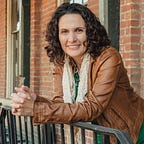Deep Brain Stimulation Offers Another Chance
How we rediscover our bodies and who we are within them
Most people who know me online either are aware of me as a religion and politics reporter, or they’ve heard me on a podcast. Some wonder about my voice. This past year of doing podcast after podcast has allowed me to introduce myself (and re-reintroduce myself) as someone with spasmodic dysphonia, which is a vocal condition I share with NPR’s Diane Rehm and (less auspiciously) Robert F. Kennedy, Jr. My voice seems to be the most obvious of my symptoms for others.
The work of living inside my body carries a few other complications that I don’t usually draw attention to publicly — if I can help it. I have a neck tremor. My hands can be hard to control at times. I’ve limped since I was a kid and have started falling when I don’t pay close attention to where my feet are planted.
I have a broader movement disorder called dystonia (an umbrella under which my vocal condition exists). I’ve tried various medications for years — and without much benefit. It’s a tricky position to live in a body that does whatever it pleases.
Dystonia does not affect my mind, and so I have plenty of space to be philosophical about living in this body. At times, I have an acute sense of being that is severed from my…
